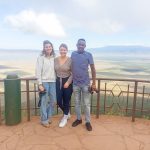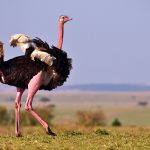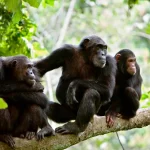
- serengeti national park safari
-
Written by : Tarimo Expeditions
Discover the Wonders of Serengeti National Park
The Serengeti National Park: A Brief Overview
Serengeti National Park is a vast conservation area located in the northern part of Tanzania, covering an area of approximately 14,750 square kilometers. The park is part of the larger Serengeti ecosystem, which includes adjacent protected areas in Tanzania and Kenya. It is famous for its stunning landscapes, diverse wildlife, and annual wildebeest migration, which is one of the most spectacular wildlife events on the planet.
The Best Time to Visit Serengeti National Park
The best time to visit Serengeti National Park depends on what you want to see and experience. The park is open year-round, but the best time to witness the wildebeest migration is from late June to October when over two million animals cross the Mara River from the neighboring Maasai Mara Reserve in Kenya. The dry season, from June to October, is also an excellent time for game viewing, as the animals tend to congregate around water sources. If you want to see the predators in action, the wet season, from November to May, is the best time to visit.
Top Attractions and Activities in Serengeti National Park
Apart from the wildebeest migration, Serengeti National Park offers a wealth of attractions and activities that are sure to keep visitors entertained. Some of the top attractions include the Ngorongoro Conservation Area, which is home to the Ngorongoro Crater, the Olduvai Gorge, where some of the oldest human remains have been found, and the Grumeti Game Reserve, which offers an exclusive safari experience. Some of the top activities include game drives, hot air balloon safaris, walking safaris, and cultural tours.
Planning Your Serengeti National Park Safari
How to Get to Serengeti National Park
The most common way to get to Serengeti National Park is by flying into Kilimanjaro International Airport or Julius Nyerere International Airport in Dar es Salaam and then taking a connecting flight to one of the park’s airstrips. Alternatively, visitors can drive to the park from Arusha, which is the nearest major town.
Accommodation in Serengeti National Park
Serengeti National Park offers a range of accommodation options, from luxury lodges and tented camps to budget campsites. Some of the top lodges and camps include Four Seasons Safari Lodge Serengeti, Singita Sasakwa Lodge, and Nomad Tanzania’s Serengeti Safari Camp. Visitors can also choose to stay in the park’s public campsites or opt for a private camping safari.
What to Pack for Your Serengeti National Park Safari
When packing for your Serengeti National Park safari, it is essential to keep in mind the park’s climate and terrain. Lightweight, breathable clothing, such as long-sleeved shirts and pants, is recommended, as well as comfortable hiking boots or sturdy sneakers. Other essential items include a hat, sunscreen, insect repellent, a camera with extra batteries and memory cards, and binoculars for game viewing.
Experiencing Wildlife in Serengeti National Park
The Big Five: Lions, Leopards, Elephants, Buffalos, and Rhinos
Serengeti National Park is home to the Big Five, which are the five most sought-after animals to spot on a safari. These include lions, leopards, elephants, buffalos, and rhinos. Visitors to the park have a good chance of seeing all of these animals, especially during the dry season when the animals congregate around water sources. However, rhinos are relatively rare and are mostly found in the park’s more remote areas.
Other Wildlife in Serengeti National Park
In addition to the Big Five, Serengeti National Park is home to a wealth of other wildlife, including giraffes, zebras, hyenas, wildebeests, cheetahs, and hippos. Visitors can also spot a variety of bird species, such as ostriches, eagles, and vultures.
Game Drives in Serengeti National Park
Game drives are the most popular way to experience wildlife in Serengeti National Park. Visitors can go on a guided safari drive in an open-sided vehicle with a knowledgeable guide who will point out and identify the different animal species. Game drives can last from a few hours to a full day, depending on the visitors’ preferences.
Cultural Experiences in Serengeti National Park
Meeting the Maasai
The Maasai people are a semi-nomadic ethnic group that have lived in the Serengeti region for centuries. Visitors to the park can learn about their traditional way of life, including their unique clothing, housing, and livestock rearing practices. Visitors can also participate in cultural tours that include dances, music, and visits to Maasai villages.
Visiting Archaeological Sites in Serengeti National Park
Serengeti National Park is home to several archaeological sites, including the Olduvai Gorge, where some of the oldest human remains have been found. Visitors can learn about the region’s prehistory and the evolution of human beings by visiting these sites.
Conservation Efforts in Serengeti National Park
Serengeti National Park is not only a wildlife sanctuary, but it is also a center for conservation efforts. Visitors can learn about the park’s conservation programs, including anti-poaching initiatives, habitat restoration, and community development projects.
Best of Our Tanzania Safaris
From the Wildebeest Migration to the Big 5 and Tropical White Sand Beaches
Explore the best of Tanzania with our curated collection of safaris packages. Experience breathtaking wildlife, stunning landscapes and cultural richness, there’s something for everyone.



